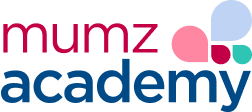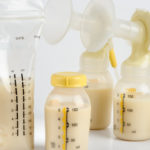Your baby may show signs of being ready for the first solid food experience. It is an important milestone but the transition needs to be well-planned. Know when, what and why of introducing solids.
According to American Academy of Pediatrics (AAP), breastmilk or formula should be the only source of nutrition your newborn receives for the first six months. However, by ages 4 to 6 months, in case of most babies, breast milk or formula alone is not sufficient to provide all the nutrition they need for their growth and development. This is the time you must start adding solids to your baby’s diet.
How Do You Know When Your Baby Is Ready?
Look for these signs to know that your baby is ready for solid foods:
- Can the child sit up? – If your baby can sit up by himself/herself with minimal support, it is a good sign and he/she is ready to be introduced to solid food. If the baby can hold his/her head steady, this is a positive sign too. Sitting upright is an indication that the baby will be able to swallow substances thicker than milk.
- Does the child want to eat what you’re eating? – If you notice that your baby is interested in your food and given a chance would pick it right off your plate to put it in his/her mouth, chances are he/she is ready to give it a shot. Of course, we don’t mean that you can offer the child some of your salad. It just indicates his/her readiness for solids.
- Is your baby mouthing the hands or toys? – This is also a sure shot indication that your baby is hungry.Perhaps breast milk is no longer enough to satisfy his/her hunger anymore.
- The tongue-thrusting reflex – If you want to be certain of whether your baby is ready to add some solids to his/her diet, simply try to feed him/her some tiny baby solid foods. If he /she pushes it right out of the mouth, he/she is not ready to swallow yet. This tongue-thrusting reflex usually starts to diminish around six months of age.
- Is your baby teething? – Babies don’t normally start teething until their sixth or seventh month. They are only designed to swallow and not to chew. But as soon as you see some signs of the first tooth appearing, see this as an indication that the baby may be ready to move on to the next level. Also read How to Care for Baby’s Teeth
Introducing Solids
Now that you know when your baby is ready for solids, it is time to get started on introducing them. First things first, when you add solids to the diet of your baby, it doesn’t mean that you should stop breastfeeding him/her. Solids are only meant to complement breast milk and not to replace it. In the first year, the baby needs to gain nutrition from both these sources. You should nurse your baby whenever he/she asks for it. Then you can slowly begin with these introductory solid foods:
- Rice Cereal – You should start with a simple baby cereal for your child. Rice cereal is iron-fortified and can be easily digested. Moreover, the chances of any food allergies to rice are very rare. You can begin with one or two feedings a day. Do not force it on your child. If he/she shakes the head, wait a week or so and let him/her try it again.
- Fruits and Vegetables – After you have had success with the rice cereal, you can gradually begin to add fruits and vegetables to your baby’s diet. Make sure they have no added sugar or salt. You can even make use of the baby food grinder to mash or puree the fruits and vegetables to make them easier for your baby to swallow. Check out the amazing collection of baby food processors available on our website. For more tips read Top 10 Baby Feeding Processors
- Finger Foods: You are ready to progress on to the next level by introducing chopped finger foods to your baby’s meals once he/she is 8 months or older. Make sure the size of the solids is not too big to protect the baby from possible choking hazards. Get healthy baby snacks from Mumzworld.
Keeping an Eye on Food Allergies
It is recommended that you should keep a gap of three to four days between every new food. This will tell you if the baby is allergic to certain food items and you will be able to eliminate it from your list. Keep an eye out for signs of a rash, wheezing, vomiting, difficulty in breathing, or any other similar allergic reactions. If you see these signs, the baby’s body is most likely rejecting that particular solid.
Foods That You Must Avoid
These are some food items that you should avoid introducing your baby to in the first year:
- Nuts
- Seeds
- Raw Vegetables
- Popcorn
- Peanut Butter
- Honey (It causes botulism in babies under 1 year)
- Cow’s Milk
- Egg whites
- Grapes
- Dry Cereal
- Wheat
- Corn
This is not an extensive list and there are many other food items that you must avoid at all costs to prevent choking hazards and allergic reactions. The best thing you can do is follow your baby’s cues and learn about his/her likes and dislikes.
Easing the Transition
Here are some easy tips that you can follow when you and your baby are ready to try out some solids:
- Try introducing your baby to solids at his/her favorite time of the day. He/she will be in a relaxed and happy mood and will probably respond better as a result.
- Do not try to coax your baby to eat solids when he/she is clearly rejecting them. Try again after a few days.
- Try new foods until the time your baby finally says yes to one and gladly eats it without a fuss.
- Engage your baby in some other activity when you would usually nurse him/her. This helps in breaking the habit of nursing and gradually moving to solid meals.
- Try to introduce a bottle or a cup to your baby if he/she is a little younger than 1 year old. This will encourage him/her to try feeding from other sources.
Over a span of few months, we are sure you will be able to establish a healthy meal routine for your baby, finding a fine balance between breastmilk and solid foods.
For more tips check out How to Begin Weaning






